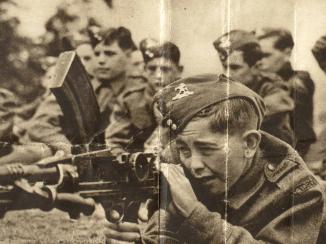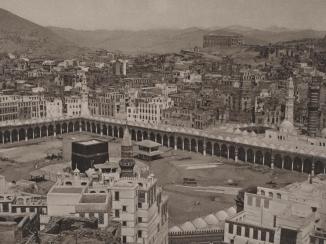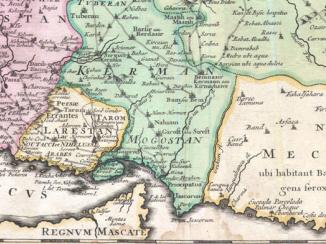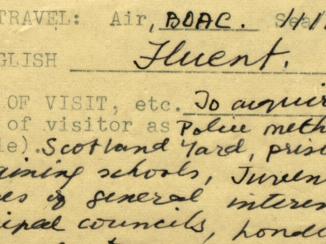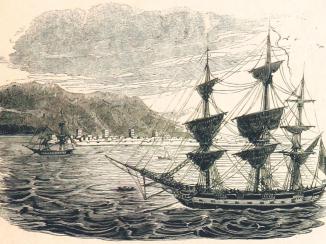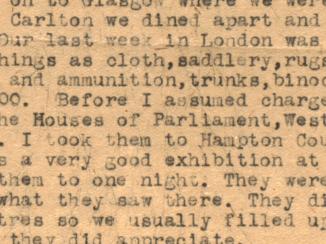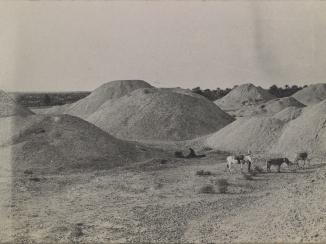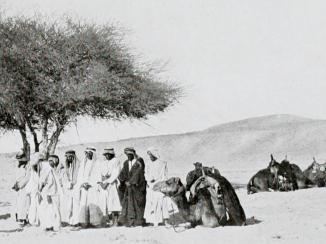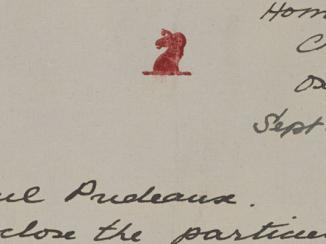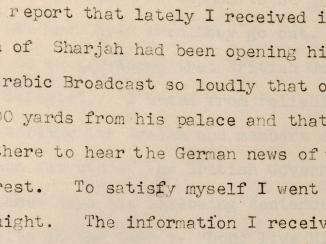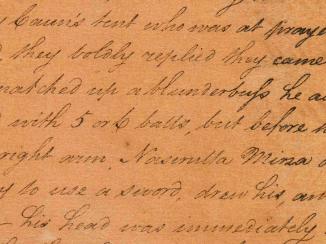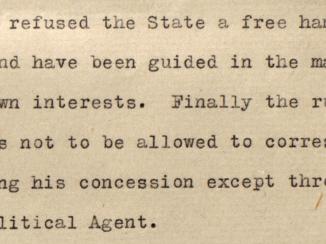Overview
In January 1946, a number of pamphlets produced by the U.S. Government’s Office of War Information (OWI) were sent via post to Shaikh Khalifa bin Mohammed Al Khalifa, the Chief of the Bahrain Police Force. At this time, the U.S. government wanted to establish a consulate in Bahrain and, since 1942, had repeatedly asked for Britain’s permission to do so.
No Desire to Share ‘Influence in the Country’
The British, unwilling to allow any other foreign countries – even close allies – access to Bahrain, had refused the U.S.’s requests. The ruler of Bahrain, Shaikh Salman bin Hamad Al Khalifa was also opposed to the idea, explaining to Arnold Crawshaw Galloway, Britain’s Political Agent A mid-ranking political representative (equivalent to a Consul) from the diplomatic corps of the Government of India or one of its subordinate provincial governments, in charge of a Political Agency. in Bahrain, that ‘although the U.S.A was a great and powerful ally, he did not desire that our [Britain’s] influence in the country should be shared with anyone’. The fact that Shaikh Khalifa’s response after receiving the OWI materials was to forward them to Galloway demonstrates the depth of Britain’s control over Bahrain during this period.
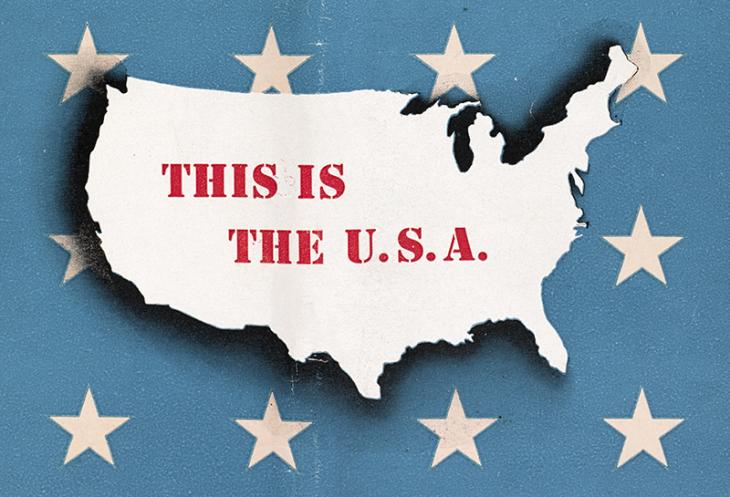
Raising the Profile of the U.S. in the Middle East
Although the U.S.’s profile on the world stage grew dramatically as World War II progressed, at the beginning of the war, the U.S. was not the globally recognized super-power and symbol of modernity par excellence that it would later become. Especially in the Middle East, the major European powers were more widely known than the U.S. Therefore, a key aim of the OWI pamphlets sent to Shaikh Khalifa was simply to raise awareness in the region of the U.S., especially amongst those who had been identified as key decision-makers or those who played an important role in the formation of public opinion. The OWI material sent to Shaikh Khalifa consisted of three pamphlets: one in Arabic entitled Childcare in the United States and two in English: The Story of the United States Government... How It Started... And How It Works; and This is the U.S.A.
Clearly Targeting Women
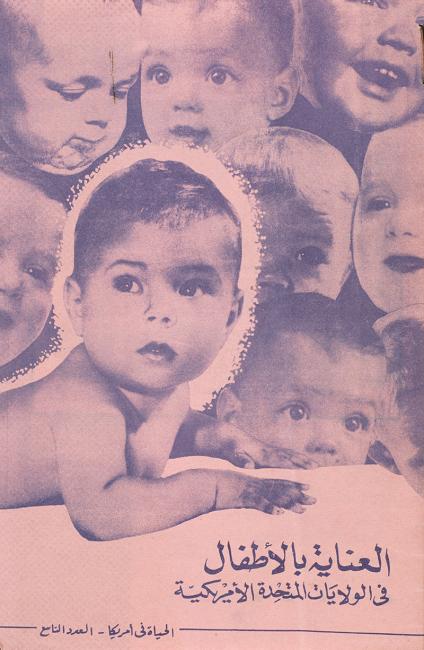
The pamphlet concerning childcare, number nine in a series entitled Life in America, is of particular interest as it is an early example of U.S. government propaganda produced in Arabic.
Clearly targeted at women, the pamphlet, published in Cairo, contains information regarding nutrition, hygiene and healthcare for young children including instructions on breast feeding and washing. The opening text of the pamphlet declares that ‘America is the land of smiling children and one of the reasons for their happiness is that they’re healthy’. It seeks to project an image of the U.S. as a modern, clean and clinically advanced society – the ideal environment in which to raise children.
The Constitution: A Picture Story
The Story of the United States Government is a ‘picture story’ that uses a cartoon depicting an American citizen named John to explain ‘how a citizen of the United States participates in the election of the men who are to govern him, and of how his government serves him’. The pamphlet explains the structure of the U.S. government and the various rights and obligations that John has as a citizen of the country, including the payment of taxes, military duty and jury service.
It also contains a basic – and idealized – history of the U.S. and a summary of the constitution and its amendments. The concluding paragraph of the pamphlet states that the U.S. government ‘permits freedom of religion, freedom of speech, freedom of the press, freedom of assembly, and freedom to choose those who govern’ and that John and ‘millions like him all over the world are fighting to keep those freedoms alive’.
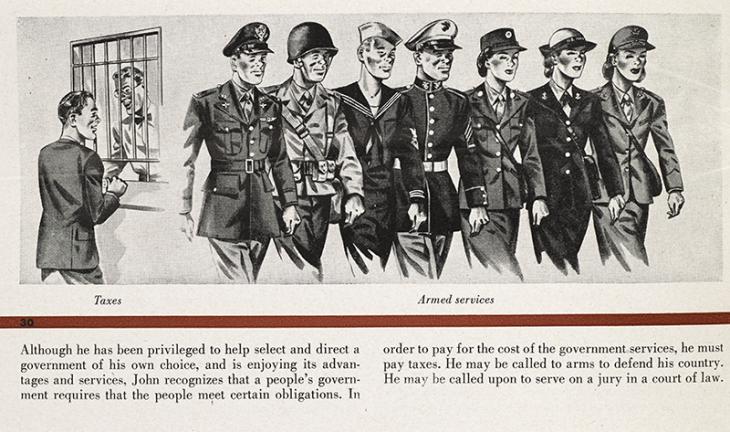
‘This is the U.S.A.’
This is the U.S.A. is a larger pamphlet that is extensively illustrated with photos depicting the various regions of the U.S. and their inhabitants in a style reminiscent of a travel guide. It stresses the scale and natural beauty of the country as well as the diversity of its population and its abundance of natural resources.
On the pamphlet’s final page opposite a dramatic image of the Statue of Liberty at night, the U.S. is described as ‘a land of political, racial and religious freedom’ that is currently joined together with ‘people of the other United Nations in the great fight to restore liberty and justice to all conquered nations of the world’.

These OWI pamphlets and the official letters that discuss them offer a fascinating insight into U.S. propaganda activities during the era in which the U.S. emerged as a global super-power. They also highlight the growing imperial rivalry that developed between the U.S. and Britain even as the two countries were fighting together as close allies during World War Two.


